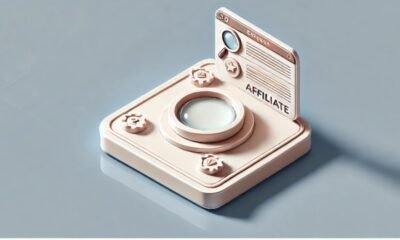Blog
From 14 Days to 72 Hours: How Precision Aluminum Prototyping Saves 30% in Development Costs for Medical Device Companies?

Figure1: Precision aluminum prototyping accelerates development cycles and significantly reduces costs for medical devices.
Introduction
In today’s highly competitive market, medical device manufacturers face unprecedented pressure: prolonged product development cycles, high costs of traditional prototype manufacturing, and slow design iteration speeds. These issues not only erode profit margins but can also cause companies to miss critical clinical approval windows or market opportunities, severely undermining their competitiveness.
Traditional manufacturing methods, such as outsourcing steel molds or handcrafting prototypes, struggle to meet the demands of rapid iteration and validation for modern medical devices. Against this backdrop, a solution combining advanced materials and digital manufacturing technology—precision aluminum prototyping—is demonstrating significant potential. By enabling rapid, precise, and cost-effective prototype development, it significantly shortens time-to-market, offering a key breakthrough for medical device companies.
What Unique Challenges and Time Pressures Does Medical Device Prototype Development Face?
The medical device prototype development process is unique, directly related to human life and health, thus facing a series of far more rigorous challenges than ordinary consumer goods.
Extremely Stringent Industry-Specific Requirements
From the prototype stage, medical devices must meet requirements for biocompatibility, strict dimensional tolerances, complex sterilization validation processes, and regulatory compliance with major global markets like FDA and CE certifications. These standards ensure the safety and effectiveness of the device for human use. For example, components for implantable devices or high-precision diagnostic equipment often require tolerances controlled within ±0.05 millimeters or even smaller. Any deviation can lead to clinical validation failure or rejection of regulatory applications.
Efficiency Bottlenecks and Cost Pressures of Traditional Prototype Methods
Traditional prototype methods like outsourcing steel molds or manual polishing are inadequate for these specific requirements.
- Slow Iteration Speed:
Each design modification, if using mold-making approaches, can involve wait times of 2 to 4 weeks. Handmade samples carry risks in accuracy and consistency, failing to meet stringent testing needs. - High Comprehensive Costs:
Protracted cycles mean not only direct machining costs but also high opportunity costs and human resource idle time. - Questions about Validation Reliability:
Prototypes made by traditional methods may differ from the final product in material properties and structural strength, affecting the reliability of functional tests and clinical validation, potentially causing issues later in development.
Significant Business Risks of Time Delays
The cost of delays in the development cycle far exceeds budget overruns. It can cause companies to miss key submission windows with regulatory bodies or lose market share to competitors. The World Health Organization (WHO), in its Global Strategy on Digital Health 2020-2025, emphasizes the need to accelerate policy development to promote the efficient and safe application of innovative medical technologies, highlighting the global consensus and urgency of accelerating access to innovative therapies. Therefore, the ability to iterate prototypes rapidly has become a strategic factor determining the success or failure of medical device companies. To systematically address these challenges, a detailed CNC Aluminum Prototype Guide is crucial, providing clear direction for the complex development process.
How Does Precision CNC Machining Achieve ±0.005mm Accuracy in Aluminum Prototype Manufacturing?
Figure2: 5-axis-cnc-machining-medical-aluminum-part.
Achieving the ultra-high precision required for medical devices relies on advanced Precision CNC Machining Services, particularly 5-Axis CNC Machining technology, which represents the pinnacle of current digital manufacturing.
Precision Control of 5-Axis Linkage Machining Technology
5-axis CNC machining centers add two rotational axes to the three linear axes (X, Y, Z), allowing the cutting tool to approach the workpiece from almost any angle. This enables complex geometric parts to be completed in a single setup, eliminating cumulative errors from multiple fixturing. For medical device prototypes with complex surfaces, internal channels, or precise cavities, this is key to ensuring overall dimensional accuracy. In cnc aluminium prototyping, precision control is a systematic project relying on rigid and stable machine tool structures, optimized cutting parameters, tool selection, tool paths (CAM programming), and strict verification with precision measuring instruments like Coordinate Measuring Machines (CMM).
Data-Based Quality Control System
Precision is not accidental but stems from a rigorous quality management system. For example, under the framework of ISO 9001 certification, every step—from raw material inspection, to first-article and in-process checks of critical dimensions during machining, to final full-dimensional reports—is traceable. Data shows that through strict process control, the pass rate for key dimensional tolerances of aluminum prototypes can be consistently maintained above 98%, ensuring each prototype meets design intent and lays a solid foundation for subsequent testing and validation.
What are the Key Strategies for Cost Optimization in Aluminum Prototype Manufacturing?
While ensuring the highest quality, effective cost control is core to enhancing a company’s competitiveness. Partnering with an excellent Custom Industrial Parts Manufacturer and implementing the following key strategies can achieve significant cost optimization in cnc machining rapid prototyping.
The Science and Art of Material Selection
Scientifically selecting aluminum alloy grades for different applications is the first step in optimizing costs. For instance, 6061 aluminum alloy offers excellent overall mechanical properties and machinability at a relatively low cost, suitable for most structural components and enclosures. For parts requiring higher load-bearing capacity or wear resistance, such as joints in surgical instruments, 7075 aluminum alloy, despite a higher unit cost, provides superior strength that can extend prototype lifespan during testing, thereby improving cost-effectiveness overall.
Design for Manufacturability (DFM) Optimization
Cost is largely determined during the design phase. Through DFM analysis, considering manufacturing process characteristics early on can significantly reduce costs. Examples include simplifying unnecessary complex features, standardizing fillet radii to reduce tool changes, and avoiding excessively deep cavities to reduce machining time. An optimized design not only reduces machining time and material waste but also lowers the complexity of post-processing, enabling precise cost control at the source.
Batch Effects and Process Optimization
Although prototype quantities are small, during small-batch clinical trials or registration validation, rational production planning leveraging the batch production advantages of CNC machining can effectively reduce the unit cost. Furthermore, integrating supply chain management through efficient Supplier Relationship Management (SRM) systems interfacing with SAP, MES, etc., can improve order coordination and supplier management efficiency, indirectly controlling costs. According to studies by the International Society of Manufacturing Engineers (SME), comprehensive application of these strategies can typically achieve 15%-30% cost savings for manufacturing enterprises.
How Do Surface Treatment Technologies Enhance the Performance and Value of Aluminum Prototypes?
Surface treatment of aluminum prototypes is a critical step in the precision manufacturing process, significantly enhancing not only the product’s appearance but also fundamentally improving its mechanical properties, durability, and environmental adaptability, thereby creating greater value for demanding applications like medical devices.
Functional Comparison of Surface Treatment Technologies
Aluminum surface treatment technologies mainly include anodizing, electrophoretic painting, powder coating, and aluminium plating (electroplating), among others. Anodizing, for instance, creates a dense, hard oxide layer (typically 5-20μm thick) on the aluminum surface through an electrochemical process, greatly enhancing the wear resistance, and corrosion resistance of aluminium products, and allows for coloring for decorative purposes. Electrophoretic painting provides a uniform color coating with strong UV resistance, ideal for applications requiring high appearance consistency. Plating (e.g., nickel plating, chrome plating) can impart specific metallic luster, higher surface hardness, or special electrical conductivity to aluminum prototypes.
Technical Advantages and Practice of Eco-Friendly Plating Processes
With increasingly stringent global environmental regulations (e.g., EU RoHS Directive), traditional plating processes containing cyanides and hexavalent chromium are being phased out in favor of non-cyanide, non-nickel green plating technologies.
- Technical Advantages:
New eco-friendly plating processes use systems like cyanide-free alkaline copper pre-plating and cyanide-free white bronze-tin, eliminating the use of highly toxic cyanides and carcinogenic hexavalent chromium while achieving coatings with high adhesion, no pitting, and excellent corrosion resistance, comparable in quality to traditional processes. - Specific Practices:
Under the ISO 14001 Environmental Management System framework, specific practices for eco-friendly plating include using zirconium/titanium salt passivation instead of traditional chromate conversion, integrating counter-current rinsing and RO reverse osmosis systems to achieve over 90% water recycling, and using high-frequency switching power supplies to reduce energy consumption, thus building green production lines.
Value of Surface Treatment for Performance Enhancement and Compliance
Proper surface treatment can directly extend the service life of aluminum prototypes (e.g., anodizing can extend life by 3-5 times) and ensure their reliability in harsh environments by improving corrosion and wear resistance. Simultaneously, these processes are crucial steps in meeting international standards and industry regulations, ensuring smooth market entry.
How Does Rapid Prototyping Accelerate the Product Iteration Cycle?
The rise of service models like Rapid Prototyping India addresses the market’s demand for extreme speed. Through efficient cnc machining rapid prototyping, product iteration cycles can be compressed exponentially.
The process from design file confirmation to receiving the physical prototype, which might take weeks traditionally, can now be shortened to 3-5 working days, or even within 72 hours for urgent cases. This speed advantage allows development teams to complete the full “design-test-feedback-modify” loop in a very short time. Companies can simultaneously produce multiple design versions of prototypes (A/B testing) for comparative validation, quickly identifying the optimal solution, thereby elevating the efficiency of product improvement to a new level.
This rapid iteration capability is reflected not only in the speed of producing individual prototypes but also in the optimization of the entire product development process. It allows engineers to detect design flaws earlier and conduct validation more frequently, resolving most potential issues in the early development stages and avoiding costly and time-consuming design changes later in production or final manufacturing stages. If you are facing pressure from development timelines, our Rapid Prototyping Services could be your ideal choice.
Conclusion
In summary, precision aluminum prototyping, utilizing 5-Axis CNC Machining technology combined with scientific material selection, Design for Manufacturability optimization, and functional surface treatment processes, builds an efficient, economical, and highly reliable solution. It can not only drastically shorten the product development cycle from the traditional 14 days to 72 hours but also help medical device companies achieve up to 30% comprehensive cost savings through full-process optimization. Simultaneously, it meets stringent regulatory requirements like FDA and CE, significantly enhancing a company’s market competitiveness and risk resilience.
For medical device companies committed to accelerating innovation and seizing market opportunities, choosing an experienced and fully certified manufacturing partner is essential. The LS Manufacturing has expert team boasts 20 years of experience in precision manufacturing, serves over 5,000 clients globally, and holds international certifications including ISO 9001 (Quality), ISO 14001 (Environment), IATF 16949 (Automotive), ISO 13485 (Medical Devices), and AS9100D (Aerospace). Contact their experts immediately to obtain a customized aluminum prototype manufacturing solution, experience their efficient 5-day rapid delivery service, and fully accelerate your product’s time to market!
FAQs
Q1: What is the minimum machining accuracy achievable for aluminum prototypes?
Aluminum prototypes can achieve an accuracy of ±0.005mm through precision CNC machining, depending on the part structure and material properties; complex structures might require special process support.
Q2: What types of product testing are aluminum prototypes suitable for?
Aluminum prototypes are suitable for functional testing, assembly verification, environmental testing, etc. Their mechanical properties are close to the final product, making test results highly valuable for reference.
Q3: How does surface treatment affect the lifespan of an aluminum prototype?
Appropriate surface treatment can significantly enhance the corrosion resistance and wear resistance of aluminum prototypes, extending their service life while improving aesthetic quality.
Q4: How is the actual cost-effectiveness of aluminum prototype manufacturing evaluated?
It requires comprehensive consideration of factors like development time saved, testing efficiency gains, and modification cost reductions. Typically, over 30% comprehensive cost optimization can be achieved.
Q5: What is the typical lead time for aluminum prototype manufacturing?
From drawing confirmation to finished product delivery, the standard lead time for aluminum prototypes is 3-5 working days, with expedited options available for urgent projects, potentially as fast as 48 hours.
-

 Tech1 year ago
Tech1 year agoHow to Use a Temporary Number for WhatsApp
-

 Business2 years ago
Business2 years agoSepatuindonesia.com | Best Online Store in Indonesia
-

 Social Media1 year ago
Social Media1 year agoThe Best Methods to Download TikTok Videos Using SnapTik
-

 Technology1 year ago
Technology1 year agoTop High Paying Affiliate Programs
-

 Tech10 months ago
Tech10 months agoUnderstanding thejavasea.me Leaks Aio-TLP: A Comprehensive Guide
-

 FOOD1 year ago
FOOD1 year agoHow to Identify Pure Desi Ghee? Ultimate Guidelines for Purchasing Authentic Ghee Online
-

 Instagram3 years ago
Instagram3 years agoFree Instagram Auto Follower Without Login
-

 Instagram3 years ago
Instagram3 years agoFree Instagram Follower Without Login




















